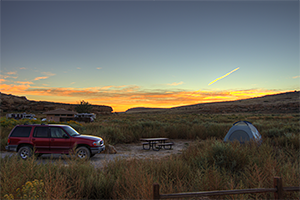 We woke up to a golden water-colored sky at the horizon. It was a great start to the day, but it was gone as quickly as it appeared.
By the time we were ready to go, the gold was gone from the eastern sky, and the pink swirls in the western sky had disappeared.
We woke up to a golden water-colored sky at the horizon. It was a great start to the day, but it was gone as quickly as it appeared.
By the time we were ready to go, the gold was gone from the eastern sky, and the pink swirls in the western sky had disappeared.
As we drove up Chaco Canyon, we spotted a bull elk on the opposite side of the wash standing by a tree about 1/2 mile away. We decided to continue around the loop and try to shoot him from the east-bound part of the loop. We stopped to put our long lenses on our cameras and started searching for the elk. There are very few trees or bushes in Chaco Canyon, but we never saw the elk again. Since we couldn't leave the road to hike into any areas, our options were pretty limited.
Pueblo Del Arroyo
Our first stop was Pueblo Del Arroyo,![]() which sits above Chaco Wash and is at the far end of the park loop. It looks toward South Gap where travelers from the south dropped
into Chaco Canyon. It must have been a welcome sight for travelers walking to Chaco. You can see South Gap between the two hills in the first image below.
which sits above Chaco Wash and is at the far end of the park loop. It looks toward South Gap where travelers from the south dropped
into Chaco Canyon. It must have been a welcome sight for travelers walking to Chaco. You can see South Gap between the two hills in the first image below.
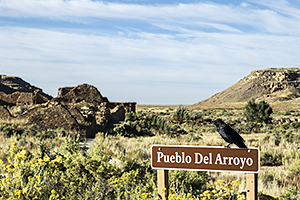 |
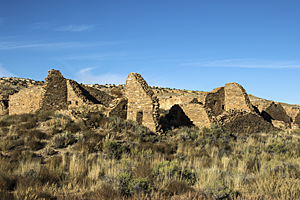 |
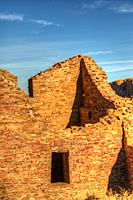 |
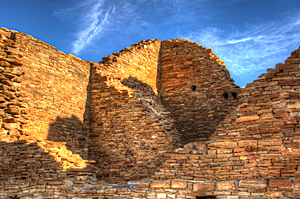 |
Pueblo Del Arroyo was three or four stories tall and faces east. It was the latest built and the smallest of the “Bonito-style” great houses in Chaco Canyon. Much of it hasn't been excavated (especially in the northwest corner of the ruins) to help protect the walls and structure.
After exploring Pueblo del Arroyo, we stopped at the Visitor Center and then returned to our campsite to take down the tent and pack everything up. Our tenting "memory" kicked back in, and we had everything packed up in nothing flat.
We returned to Pueblo Bonito to try to shoot the doorways again in midday light, but orange cones with "Do Not Enter" signs filled the doorways at each end. The Park Service was doing maintenance work on the walls. Not only did the orange cones fill the doorways, but the Park Service had also erected scaffolding. We re-shot some of the surrounding rooms, but there was no way to re-shoot the doorways. When we returned to the exterior of the ruins, the clouds had completely filled the sky, and the lighting was an even blah! Even lighting is great for waterfalls and petroglyphs, but not for ruins.
More information about Pueblo del Arroyo can be found in a virtual tour of the site.
We hiked the Petroglyph Trail to reach the Chetro Ketl ruins. Most of the rock art along the trail was pretty primitive. It was pecked into the sandstone, so it was hard to find in many areas and even harder to photograph. We found an interesting bird where the Chacoans used pecking, abrading, incising, and drilling on a single image; something done nowhere outside Chaco Canyon. There was also an interesting "guy" pecked into the sandstone wall near Chetro Ketl. Chaco Canyon was great for the amazing stone work and ruins, but we saw much better rock art later in the trip.
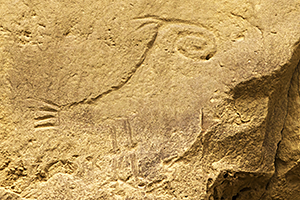
|
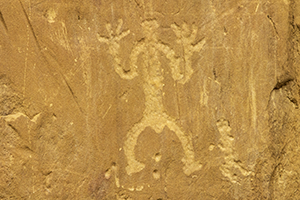
|
Chetro Ketl
Chetro Ketl![]() was
another great house with 500 rooms that covered nearly 4 acres. Although Pueblo Bonito had more rooms,
Chetro Ketl covered more acreage. Incredibly, each of the great houses was constructed starting from a single-story room block
but was expanded over the years to match their master plan.
was
another great house with 500 rooms that covered nearly 4 acres. Although Pueblo Bonito had more rooms,
Chetro Ketl covered more acreage. Incredibly, each of the great houses was constructed starting from a single-story room block
but was expanded over the years to match their master plan.
Over a period of 300 years, more than 200,000 trees were cut to build the great houses at Chaco Canyon. Looking around, you quickly realize those trees weren't cut anywhere close by. In fact, they were brought in from forests 50 - 70 miles away. They cut the trees and allowed them to dry to reduce the weight. Then, groups of men carried the timbers to Chaco Canyon! It's hard to comprehend carrying the logs from 200,000 trees 50 - 70 miles to build the great houses. That's an average of over 6,000 trees per year.
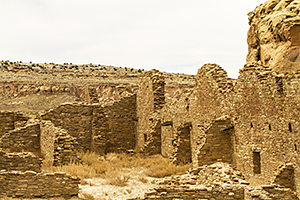
|
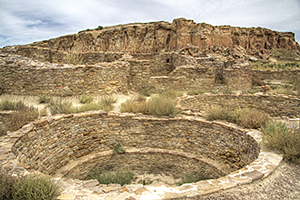 |
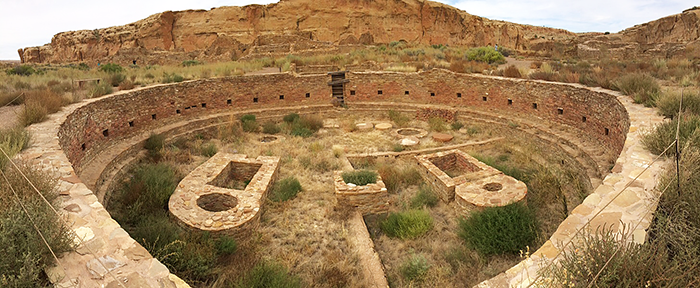
Looking at the ruins with only the masonry walls left behind, it's difficult to visualize what Chetro Ketl looked like. But when you see a rendering of what it may have looked like, the scale and magnitude of these great houses starts to sink in.
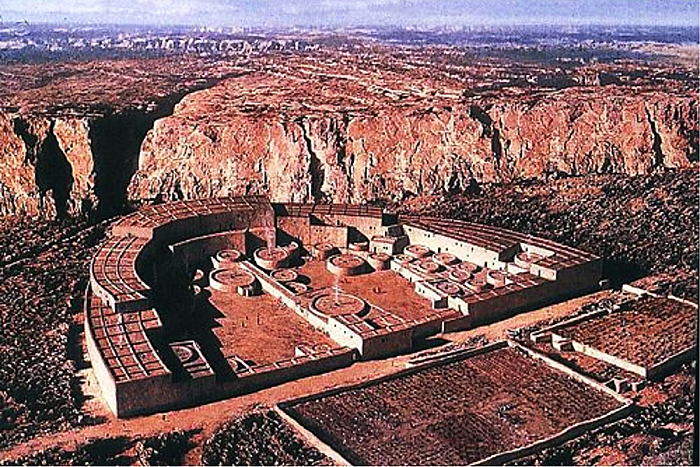
More information about Chetro Ketl can be found in a virtual tour of the site.
We concluded our days at Chaco Canyon with a stop at the Dairy Queen on the way home. How can you beat a Blizzard on a warm end-of-summer day?

